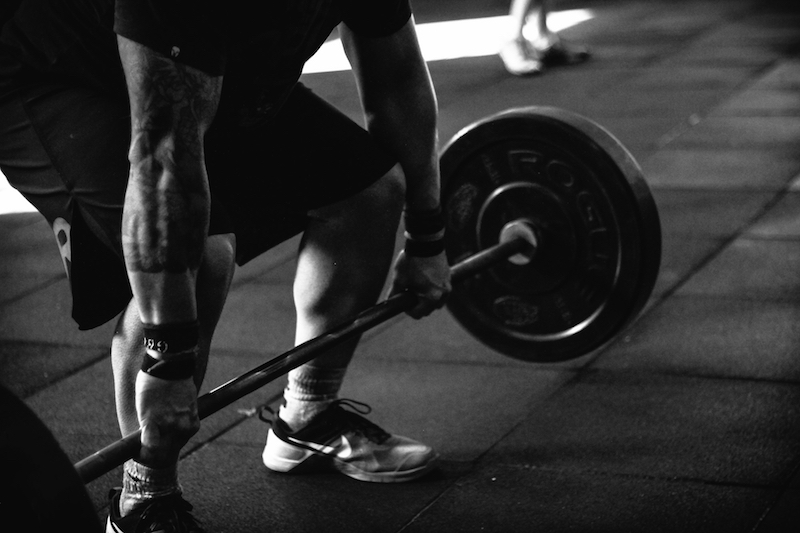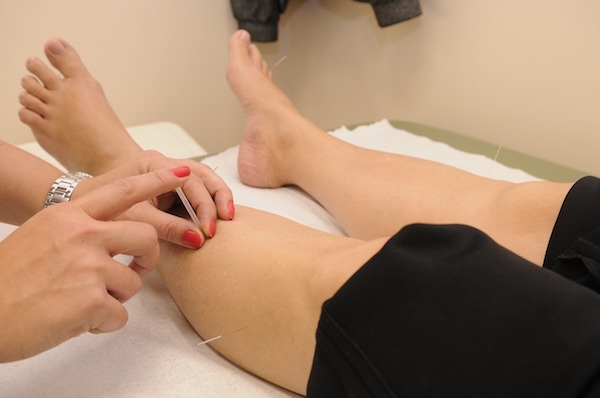I thought I knew what I was doing, but my back told me different.
That small tweak? It was later diagnosed as 3 herniated disks in my lower back.
I was able to bluff my way through and continue to work and train through the pain. Unfortunately, the thing about pain is the longer you ignore it, put it aside and train around it, the worse it gets. It’s always there, knocking at the front door, waiting for you to it let in.
And it did get worse. Much worse. The on and off sciatica pain combined with the debilitating back spasms left me unable to lift or do much of anything. However, after a long a winding road, I’m all good now and I no longer suffer from chronic back pain. It was a painful road to recovery, but now I lift and play til my heart’s content.
You’re probably familiar with pain and maybe even chronic pain that stops you in your tracks. If that’s the case, here are 3 techniques to help you navigate through your pain.
Don’t take your pain lying down.
Editor’s note: This article is an op-ed. The views expressed herein and in the video are the author’s and don’t necessarily reflect the views of BarBend. Claims, assertions, opinions, and quotes have been sourced exclusively by the author.
1. Do some research
Breaking news: When it comes to your pain your local GP or pain management specialist mightn’t have your best interests at heart. Their usual advice consists of:
- Stop doing that exercise and rest
- Show me the money
- I have a pill or injection for that
This is not terrible advice because sometimes the pain is too much to handle and you want it to go away, even if it’s only temporary. However, this doesn’t get to the root of the problem.
This is where Google is your best friend. Not so you can self diagnose — that’s rarely a good idea — but because you can find a medical professional who has encountered your type of injury/pain before, which means your time and money will less likely be wasted and the treatment they prescribe is more likely to work.
Another route you can go is using the direct messaging function on sites like Facebook, Twitter and LinkedIn because you can reach out and ask questions about your current predicament to those who are in the know, be they professionals or other athletes who have had the same injury. When you’re asking, make sure your questions are as concise as possible to avoid possible confusion and time wasted.
They can offer suggestions on what to do because they may have experienced or met a someone with a similar injury, but remember: you need the advice of qualified pros. Your body deserves expertise.
[Read more: How to manage injury risk during intense strength training.]
2. You may wind up trying a lot of different solutions
Pain and the human body have a complicated relationship, and we are all put together differently. Those two factors combined mean that there is more than one way to treat and help alleviate your pain.
What works for you mightn’t work for me and what works for me mightn’t work for you. But how do you find this out? While “throwing caution to the wind” is a bit of an overstatement, you do want to open your mind to the possibility that the one recovery method you wanted to try may not be the end all and be all.
When going through my lower back issues I tried
– Spinal adjustments
– Decompression treatments
– Ignoring it
– Physical therapy
Nothing worked until I went through intensive Physical Therapy.
This involved breathing techniques straight out of the Postural Restoration Institute handbook. This included getting into various positions, using balls, bands and balloons to reawaken dormant breathing muscles that I wasn’t using.
Furthermore, I went through postural adjustments using techniques such as self-massage, core training, upper/lower back work using pink dumbbells, stability balls and being wrapped up in resistance bands to re-engage postural muscles that I had neglected because of my crappy posture.
It was a long, painful and humbling experience, but it was worth it.
Please try your treatment of choice but if you see no improvement, move on and crack another egg. Don’t take your pain lying down.
[Curious about alternative therapies? Check out our articles on acupuncture and gua sha.]
3. Learn Perspective
On my way to yet another physical therapy appointment, I was having a “woe is me moment.” My back was killing me, and at that moment I didn’t see any light at the end of the tunnel.
That’s when I walked past two guys on their way to PT also. One was in a wheelchair with no legs, the other had an amputated leg below the knee, walking with the aid of a walker.
I felt like complete idiot.
When my therapist asked me how I was feeling, I had a response all cued and ready to go.
Regan, I was going to tell you that I felt like shit. But then I walked past two guys in the car park without the use of their legs. I’m good, mate, so let’s get to work.
No matter how bad you’re feeling, someone has it much worse than you. Keeping that in mind will put your situation in perspective and help keep your eye on the prize.
Wrapping up
Being in chronic pain sucks, but it’s personal to you. Please don’t ignore it and use the advice above to find a treatment that works for you.
And remember it may’ve taken you some time to get into pain and it’s going to take some time to get out of it. Keep your head up, do the work and the rewards will come.


